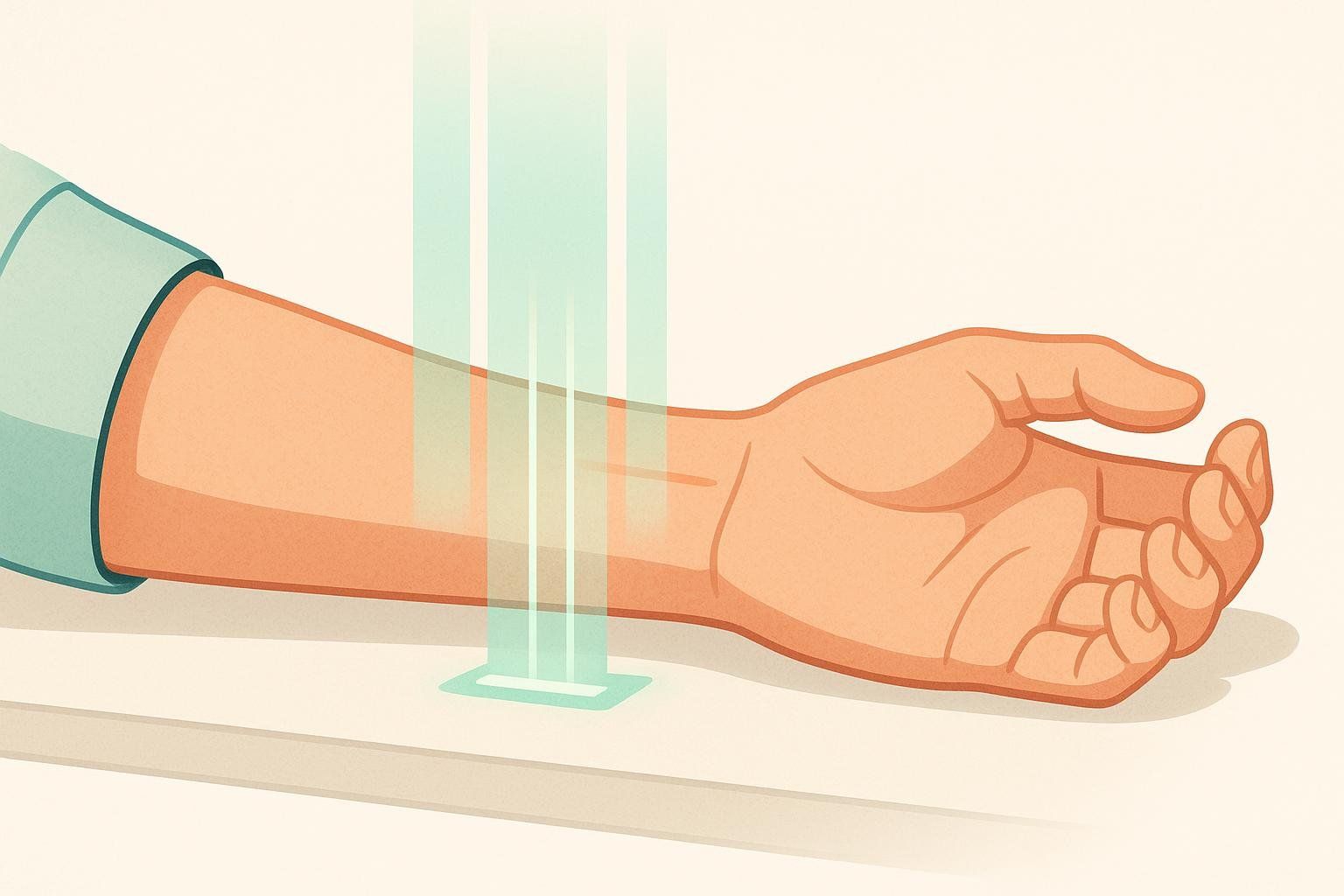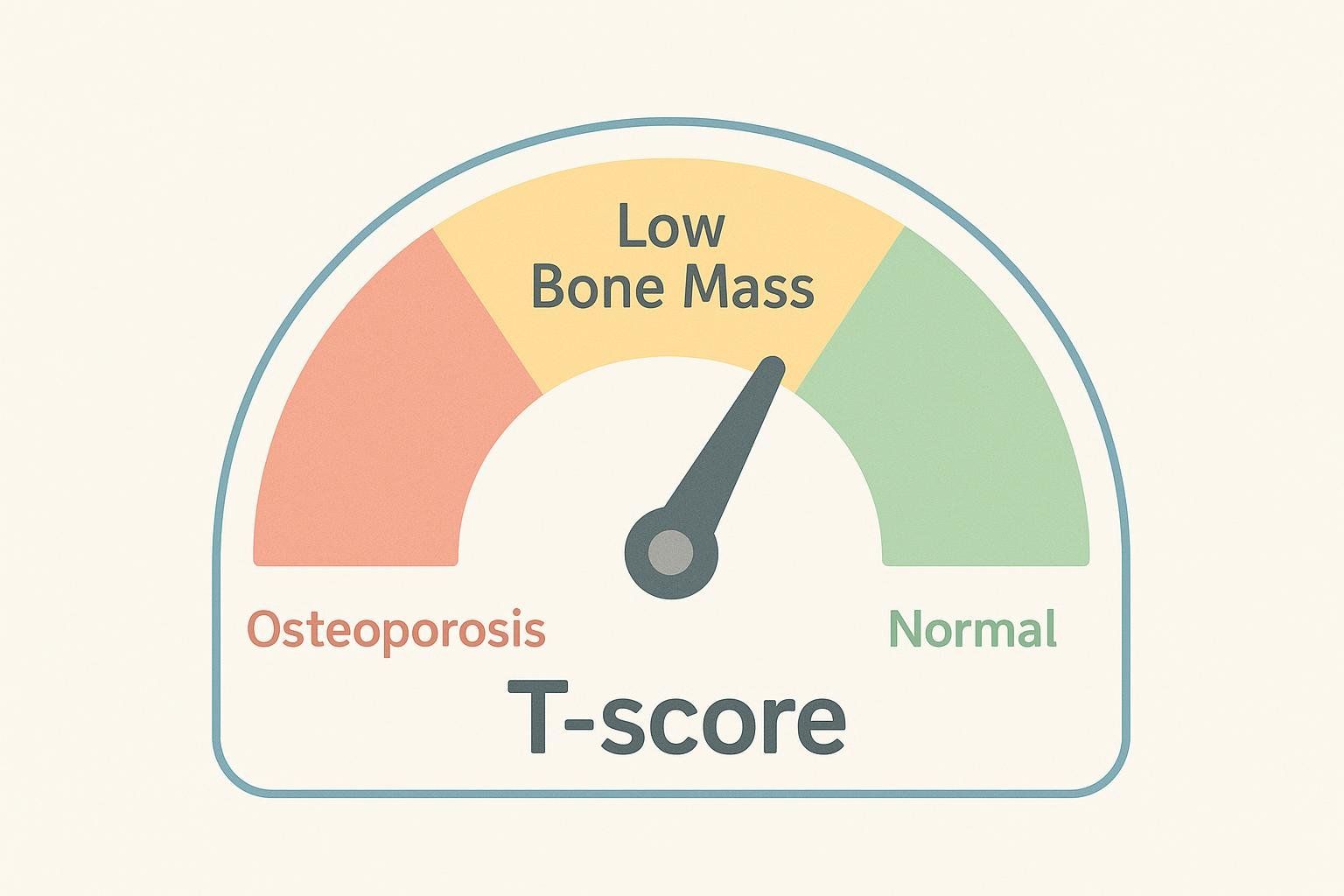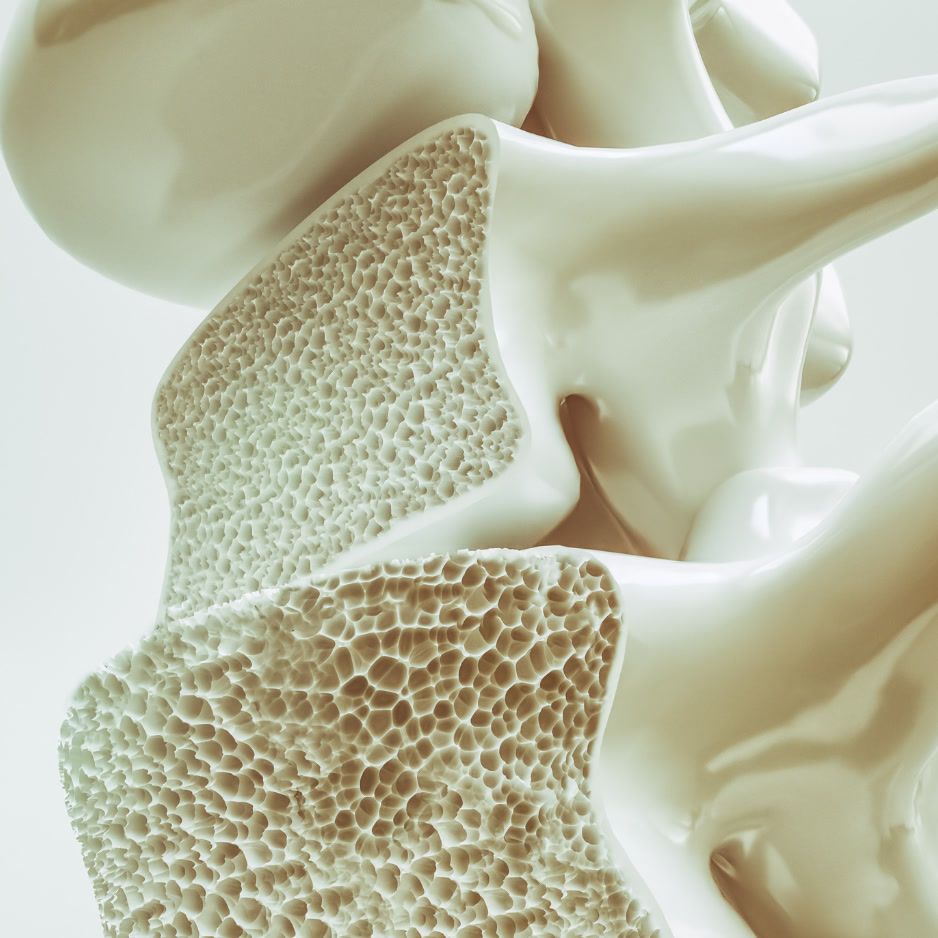Peripheral DEXA Scan vs. Central DXA: Key Differences and Uses

Peripheral DEXA Scan vs. Central DXA: What to Know
Peripheral DEXA (pDXA) scans measure bone density at the wrist, forearm, finger, or heel. This guide explains how pDXA compares to central hip/spine DXA—the diagnostic gold standard for osteoporosis diagnosis and monitoring—so you can choose the right option for your goals.
Note: DEXA and DXA refer to the same technology and are used interchangeably in clinics and online (RadiologyInfo).
Key takeaways
- Peripheral DEXA (pDXA) measures bone density at appendicular sites (wrist/forearm, finger, heel) and is handy for quick screening or when hip/spine scans aren’t feasible (RadiologyInfo; ISCD 2023).
- Central DXA (hip/spine) is the diagnostic standard to classify osteoporosis/osteopenia and to monitor therapy over time (ISCD 2023; ACR Appropriateness Criteria).
- BodySpec full-body DEXA is a wellness scan for body composition (fat, lean mass, visceral fat) with a non-diagnostic bone-density measurement; it’s great for tracking change and starting a conversation with your clinician (BodySpec overview; Interpreting results).
- If a peripheral screen shows low bone density or an abnormal result, follow up with a central hip/spine DXA for diagnosis and treatment planning (Mayo Clinic).
- The 33% (one-third) radius forearm site can be used for diagnostic classification when hip/spine can’t be measured/interpreted and in primary hyperparathyroidism (ISCD 2023).
- Radiation is very low across all three—far less than a chest X-ray (RadiologyInfo; BodySpec radiation guide).
What is a peripheral DEXA scan?

Peripheral DXA (pDXA) uses the same dual-energy X-ray approach as standard DXA but focuses on appendicular bones—typically the distal forearm (radius), wrist, finger, or heel. These devices are compact, fast, and often found in community settings, which makes screening more accessible (RadiologyInfo).
By contrast, central DXA scans your lumbar spine and hips and is the standard for diagnosing osteoporosis and tracking treatment response (RadiologyInfo; ISCD 2023).
BodySpec’s full-body DEXA is a separate, wellness-focused scan that measures body fat, lean mass, and visceral fat and provides a non-diagnostic bone-density measurement you can share with your clinician (BodySpec overview).
Central vs. peripheral vs. full-body DXA—at a glance

| Feature | Central DXA (hip/spine) | Peripheral DEXA (wrist/heel) | BodySpec Full-body DEXA |
|---|---|---|---|
| What it measures | Lumbar spine and hip BMD | Forearm/wrist, finger, or heel BMD | Whole-body composition (fat, lean, VAT) + non-diagnostic bone metrics |
| Primary use | Diagnosis + monitoring | Screening + risk stratification | Wellness tracking + trend monitoring |
| Diagnostic role | The diagnostic standard, using WHO T-scores. Can include Vertebral Fracture Assessment (VFA). | 33% radius forearm acceptable when hip/spine not feasible; exception for primary hyperparathyroidism (PHPT) | Not for diagnosis; provides measures to discuss with your doctor |
| Monitoring therapy | Preferred method | Not recommended | Tracks body comp change over time |
| Fracture-risk prediction | Strongest for hip fracture | Predicts risk but generally weaker than central | Not designed for fracture diagnosis; supports wellness decisions |
| Access/referral | Usually ordered by a clinician | Often available in community settings | No referral; direct-to-consumer at BodySpec (Learn how our no-referral scan works) |
| Radiation | Very low dose | Very low dose | Very low dose (~4–5 µSv) (BodySpec radiation guide) |
Supporting details and citations are explained below.

When is a peripheral DXA appropriate?
Peripheral DXA can be a smart choice when:
- You need a quick screen and central DXA isn’t immediately available. Screens indicating low bone density typically warrant confirmatory central hip/spine DXA (Mayo Clinic).
- Hip/spine cannot be measured or interpreted (e.g., body habitus, prior instrumentation, severe degenerative change). The ISCD 2023 positions endorse 33% radius forearm as an alternative diagnostic site in these cases.
- Primary hyperparathyroidism (PHPT): measure the 33% radius (forearm) because cortical bone loss is prominent (ISCD 2023). The ACR Appropriateness Criteria rate distal forearm DXA as appropriate when central sites are unreliable.
For routine screening, the USPSTF recommends DXA-based screening for all women 65+ and for postmenopausal women <65 at increased risk; evidence remains insufficient to recommend for or against routine screening in men—clinician judgment applies. Our guide on when women should get a bone density test offers more detail.

How accurate is peripheral DXA?
- Hip/spine DXA best predicts hip fracture, and central measures generally outperform peripheral sites for overall fracture prediction—supported by the USPSTF’s 2018 evidence review and echoed in the ACR Appropriateness Criteria and ISCD 2023 positions.
- pDXA still predicts fracture risk in postmenopausal women, but its predictive power is weaker than central DXA (ISCD 2023).
- Combine BMD with clinical risk tools like FRAX. When available, using femoral neck BMD with FRAX improves precision; learn more in our guide: How to use FRAX for fracture risk.
What to expect during a peripheral DXA
- Prep is minimal: avoid calcium supplements for 24 hours, wear metal-free clothing, and tell your clinician about recent contrast studies or if you might be pregnant (RadiologyInfo).
- The scan is quick (often minutes). You’ll place your wrist/forearm, finger, or heel into the scanner. Radiation exposure is extremely low (RadiologyInfo).
What to expect at BodySpec (full-body DEXA)
- Fast appointment (typically 15 minutes; 6–10 minutes on the table), digital results shortly after, and no referral needed. It’s a non-diagnostic wellness service ideal for tracking change over time (Learn how our no-referral scan works; BodySpec overview).
Understanding your results: T-scores and Z-scores

- T-score compares your bone density to a healthy young adult; Z-score compares to peers of your age/sex. WHO thresholds are commonly cited: normal ≥ −1.0; low bone mass −1.0 to −2.5; osteoporosis ≤ −2.5 (RadiologyInfo).
- Important nuance: those thresholds were created for central hip/spine sites. The ISCD 2023 positions permit using the 33% radius forearm for diagnosis when hip/spine can’t be measured/interpreted (and in PHPT), with appropriate reference databases. Most other peripheral sites are not recommended for diagnosis or treatment monitoring.
- BodySpec full-body DEXA provides non-diagnostic measures (including T/Z) to inform your wellness plan and help decide if diagnostic DXA is warranted (Interpreting results).
Safety and radiation (quick comparisons)
- All options use very low radiation—far less than a chest X-ray. BodySpec’s full-body scan is roughly ~4–5 µSv, about half a day of natural background radiation (BodySpec radiation guide; RadiologyInfo).
Insurance, codes, and documentation
- Common CPT/HCPCS codes:
- 77081: DXA, one or more peripheral sites (e.g., radius, wrist, heel).
- 77080: DXA, axial skeleton (hip/spine). 77085: axial with VFA.
- Medicare generally covers bone mass measurement every 24 months if criteria are met (e.g., estrogen deficiency with risk, vertebral abnormalities, long-term glucocorticoids, primary hyperparathyroidism, or monitoring FDA-approved therapy), with more frequent testing allowed when medically necessary (Noridian Medicare). For coding tips and payer pitfalls, see our CPT guide: Bone density test CPT codes: billing and documentation.
Disclaimer: Coverage rules and CPT coding guidance change over time. Always verify the latest policies with your insurer and consult current CMS/Medicare guidance.
- BodySpec full-body DEXA is cash-pay wellness (HSA/FSA often OK) and not billed to insurance. If results suggest low bone density, share the report with your clinician to decide on diagnostic DXA next steps (Learn how our no-referral scan works).
Patient FAQs
-
Is a peripheral DXA enough to diagnose osteoporosis?
- Usually no. Diagnosis/monitoring rely on central hip/spine DXA. Exception: the 33% radius can be used when central sites can’t be measured/interpreted or in PHPT (ISCD 2023).
-
How much radiation is in a peripheral scan?
- Very low—far less than a chest X-ray (RadiologyInfo). See: How much radiation is in a DEXA scan—and is it safe?.
-
My pharmacy heel or wrist test was “low.” What should I do?
- Talk with your clinician about a central hip/spine DXA to confirm and guide treatment (Mayo Clinic).
For clinicians and imaging managers: practical notes
- Site selection and reporting
- Follow ISCD standards: measure spine and hip whenever possible; use 33% radius when indicated (uninterpretable central sites, PHPT) and document rationale. Avoid cross-comparing T-scores across vendors; keep follow-ups on the same device when possible (ISCD 2023).
- Appropriateness & workflow
- The ACR Appropriateness Criteria rate lumbar spine/hip DXA as “usually appropriate” for initial screening; distal forearm DXA ranges from “may be appropriate” to “usually appropriate” depending on scenario, especially when central is unreliable.
- Quality assurance (QA) best practices
- Maintain a robust QA program with regular phantom scans, documented calibration checks, and, when operating multiple scanners, cross-calibration/fleet harmonization. Establish a facility-specific precision error and Least Significant Change (LSC) to ensure changes are meaningful (ISCD 2023).
- Access & coverage
- Medicare coverage depends on indication/frequency; document risk factors and medical necessity. See our CPT/billing guide: Bone density test CPT codes: billing and documentation.
Next steps
- If a peripheral result is low, schedule a central hip/spine DXA to confirm findings and guide care. To track body composition alongside bone health, learn how our no-referral scan works and consider a full-body DEXA for trend monitoring.


